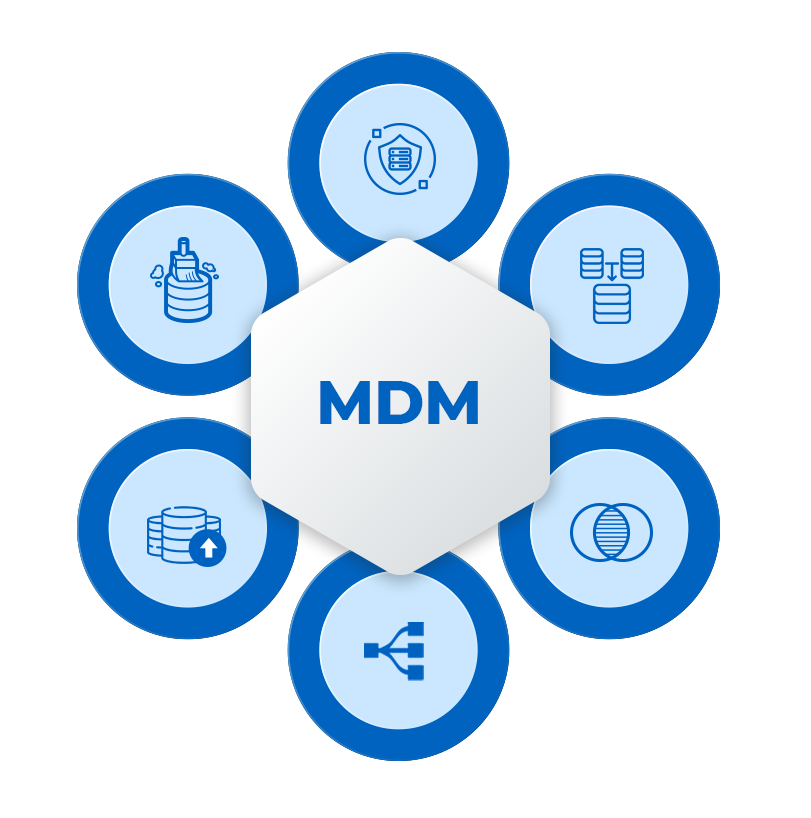
In an era where data fuels strategic decisions across every business function, the human resources (HR) department must also evolve beyond administrative duties. The ability to drive initiatives like workforce planning, employee experience, and people analytics depends heavily on the accuracy and consistency of employee data. However, fragmented systems and siloed information often lead to inconsistencies. This is where Master Data Management (MDM) becomes critical for HR operations.
Understanding MDM in the HR Context –
Master Data Management in HR refers to the practice of consolidating and managing essential employee information across various systems to maintain a single source of truth. This includes data points such as employee names, job titles, departments, contact details, reporting structures, employment status, and compensation details. Without a unified approach, employee data can differ across HRIS systems, payroll tools, access management systems, and spreadsheets, leading to confusion, inefficiencies, and potential compliance issues.
The Need for MDM in Modern HR Functions –
Today’s HR teams often manage a variety of platforms—such as benefits portals, learning management systems, performance tools, and payroll software—each storing overlapping but inconsistent employee data. MDM addresses this by synchronizing and centralizing information, ensuring that every system reflects the most accurate and current records. This consistency not only streamlines HR processes but also enables better coordination with other departments like finance, IT, and compliance.
Improving Data Quality and Accuracy –
One of the most significant benefits of implementing MDM in HR is the improvement in data quality. MDM systems validate, standardize, and remove duplicate or conflicting entries. For instance, variations of an employee’s name across different systems (“Jon Smith,” “Jonathan Smith,” or “J. Smith”) can lead to mismatches in payroll, benefits access, or performance records. MDM corrects such inconsistencies by enforcing data standards and automated validation rules, thereby enhancing the reliability of HR operations.
Enabling Compliance and Reliable Reporting –
Regulatory compliance is a major concern for HR departments, especially with global organizations subject to laws such as GDPR, HIPAA, and local labor regulations. Clean and consistent data ensures accurate reporting and audit readiness. MDM provides visibility and traceability for any updates made to employee records, which is essential for audit trails, consent management, and regulatory reporting.
Enhancing the Employee Experience –
Accurate and up-to-date employee records directly contribute to a smoother experience across the employee lifecycle. From onboarding and training to promotions and offboarding, employees expect seamless HR services. MDM reduces administrative errors—such as incorrect payroll entries or delayed benefits enrollment—by providing HR staff with access to clean, trusted data. This improves employee satisfaction and trust in the HR function.
Supporting Strategic HR Initiatives –
MDM plays a crucial role in enabling data-driven HR strategies. Whether the goal is to analyze workforce demographics, improve diversity and inclusion efforts, or identify high-potential talent, accurate data is the backbone of such initiatives. By centralizing and standardizing employee information, MDM allows HR leaders to extract meaningful insights that guide smarter, faster decision-making.
Key Components of an Effective HR MDM Framework –
Building an effective MDM strategy requires several foundational elements. First is data governance, which defines roles, responsibilities, and rules for managing data across systems. Data integration connects various HR platforms to pull and update records in real time. Data quality management involves cleansing, deduplication, and ongoing validation. A master data hub serves as the central repository, while workflow management ensures changes follow controlled, auditable processes. Together, these components maintain the integrity of employee records over time.
Common Challenges in Implementing HR MDM –
Despite the clear advantages, HR MDM comes with its own set of challenges. Legacy systems may lack integration capabilities, leading to data silos. Departments may have different standards for data entry, causing inconsistencies. Furthermore, implementing MDM often requires cultural change and cross-functional collaboration, which can be difficult without strong executive sponsorship. Finally, HR data is sensitive, so ensuring privacy and security is critical throughout the MDM process.
Best Practices for Success –
To implement MDM successfully, organizations should begin with a well-defined business case that links MDM to specific HR challenges, such as inaccurate headcount reports or onboarding delays. Cross-functional collaboration is essential—HR, IT, finance, and compliance must align on data standards and ownership. Choosing the right MDM tools that are compatible with HR systems, and regularly monitoring data quality through audits and reports, can help maintain long-term success. Continuous improvement and governance must also be embedded into daily HR operations.
Conclusion –
Master Data Management is no longer a luxury—it’s a necessity for HR departments aiming to operate efficiently, maintain compliance, and contribute to business strategy. Clean, unified employee records form the foundation for everything from accurate payroll processing to advanced workforce analytics. By investing in a robust HR MDM strategy, organizations can unlock the full value of their human capital and ensure HR becomes a true strategic partner in the digital age.

